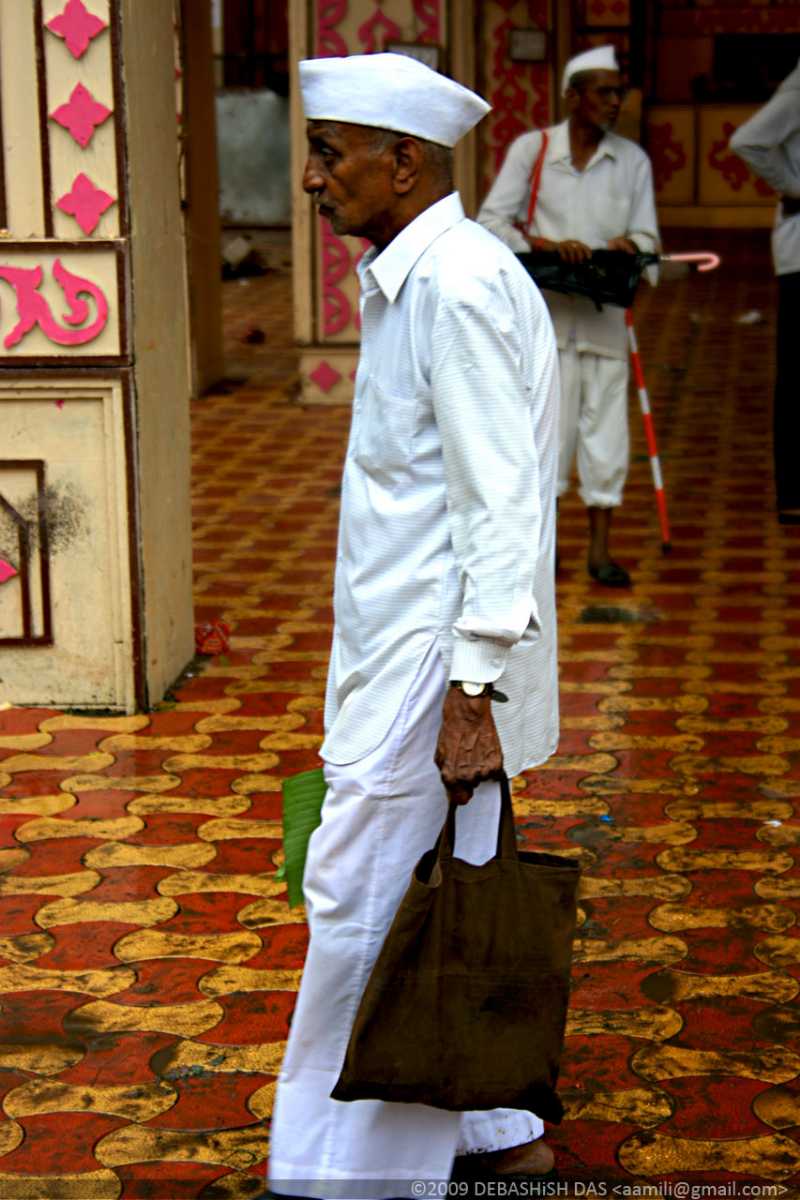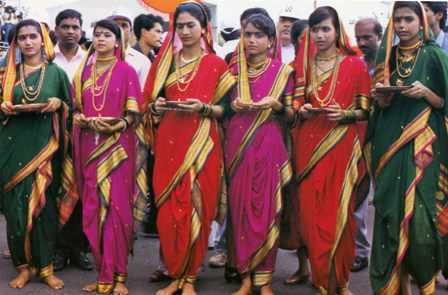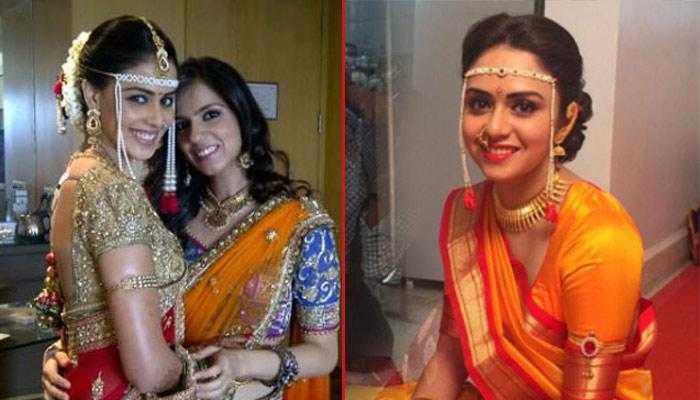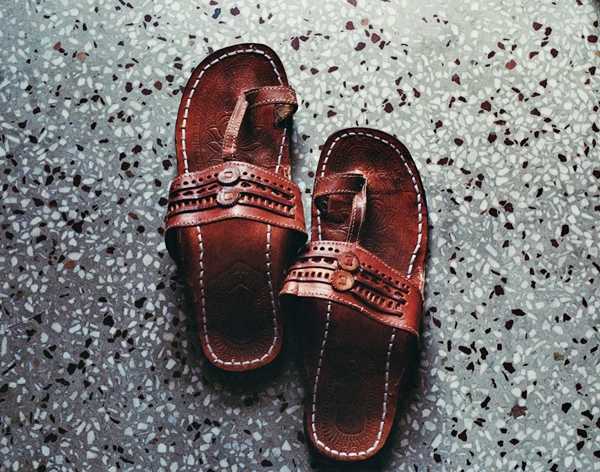Marathi Speech Related With How to Dress Up Indian Women
The Lezim dance, the Marathi folk music, its literature, its cuisine and various festivals like Ganesh Chaturthi make Maharashtra a grand state, not only in its size but also in its culture. When we talk about Maharashtra and its people, an image immediately comes up in our minds of local Maharashtrians in their traditional wears. The clothes or the traditional costumes of Maharashtra are very realistic and practical in its approach.
The occupation of the majority of people in Maharashtra is agriculture. People living on the Konkan Coast- the Konkanis are involved in fishing. Both of these activities require a lot of labour work. The people are to work hours in the sun and move around from one place to the other. Thus they wear clothes that made it easier for them to do so. In many Indian cultures, we see that women do not work outside the house. However, in Maharashtra, some did participate in various outdoor activities and even helped in agricultural activities and thus, like men, preferred to wear what made them able to move around freely and feel comfortable.
Following is the traditional Dresses of Maharashtra that the men wear:
Maharashtrian Attire For Men
Dhoti
The men in Maharashtra usually we a dhoti. A dhoti is a single piece of cloth that is tucked around one's waist, and it covers the entire leg till the ankle. Dhotis are secured by making five tucks on each side, and then the loose ends are put in at the back. Dhotis are usually saffron or cream or white in colour. Dhotis are an unstitched piece of clothing that do not require any proper measurements as one could make it however tight or loose they wished it to be.
Maharashtrians usually have the same style for everything - work or celebration. Therefore their clothes were made comfortable. Nagpur, a city in Maharashtra, is famous for its dhotis.

Pehta
Pehta is the headdress Marathi men wear. It is a 'topi', or a head cover usually made up of cotton. Pehta, also known as pagris are small hats that are made to cover the heads so as to protect them from the direct sun rays falling on their heads. Travellers and people working outside, under the sun especially wear this. By preventing the direct sun rays, the individual does not feel drained or tired too quickly or easily.
Kurta / Shirt
Maharashtrian men usually wear cotton tops or Kurtas above their dhoti. The tops are made up of cotton so as to able the garment to absorb sweat since Maharashtra has a warm to a hot environment. These tops are thin and loose, generally white in colour.
Waistcoat
The Maharashtrian men occasionally wear waistcoat called Bandi. Bandi is a sleeveless jacket or coat. They are worn above their shirts. Bandi made the Maharashtrian attire look more formal and proper. Bandis are more pragmatic keeping in mind the climate of Maharashtra which did not allow men to wear normal coats or overcoats due to the excessive warmth.
Footwear
The men usually wear simple but sturdy footwear. Their footwears are open sandals making it comfortable for them to wear. The sandals are strong and are made up of leather.
Following is the traditional or cultural costume that the women wear:
Maharashtrian Attire for Women
Sarees
Women wear sarees that are 9 yards long. The saree is tucked in the middle giving it a similar look to the dhoti. The rest of the saree is wrapped around the upper body of the women. This type of saree is usually called Lugade. There were many variations in how women wear their saree. Some only wear knee length sarees. Some wear it in a skirt manner without the tuck in the middle. But the 9-yard saree is the traditional costume of women in Maharashtra.

Head Dress/Cover
Women do not have a separate headwear as the men do. They simply use the end of their sarees to cover their heads.
Choli
The Maharashtrian women wear choli or blouse underneath the saree. It is the 'top' or shirt that they wear to cover their upper body. The choli covers half of the torso. the blouses are short, or half sleeved that have hooks in the front making it easier for the women to wear them. Similar to men's clothing, women's clothing is also made up of cotton and sometimes of silk. The commonly found colours in Maharashtrian sarees are green and red and sometimes even Kesari (yellow) colour.
Jewellery
Women wear nath i.e. a nose piercing. Naths can be simple loops or loops connected with the earring on any one side. They are normally made up of gold. Women are also found wearing other gold jewellery like earrings and necklace (haar) with different coloured stones.Married women wear mangal sutra and also green bangles. The bride wears green bangles as they are said to bring prosperity to the relationship and family. Some women even wear toe rings on their second toe of both of their feet (as the second toe is said to have a nerve that is connected to the uterus and elements from the ring are said to make the uterus strong).

Footwear
Women traditionally preferred to go barefoot and found it only natural to do so while on occasion would wear sandals. The footwear in Maharashtra is famous for its durability and longevity.
The Kolhapuri chappals are open-toed sandals in a t-strap shape that are handmade by the Maharashtrian from leather and are tanned using vegetable dyes. Kolhapuri chappal originated in the Kolhapur District of Maharashtra and are worldly known for its strength and endurance. Maharashtrians seem to have the same style of attire for everything they do - whether it is resting or attending a wedding or travelling. The only thing that differs is the material. Cotton is used for making attires for all occasions and is cheap whereas silk is relatively expensive and used for making garments for weddings, festivals and other such events.

Now due to urbanisation, a majority of Maharashtrians have adapted to the western style of clothing and even a merger of the Indian and western style (kurta and pants). But the elderly still prefer to wear this traditional style as they feel comfortable in it.
Source: https://www.holidify.com/pages/maharashtra-dresses-144.html
0 Response to "Marathi Speech Related With How to Dress Up Indian Women"
Post a Comment